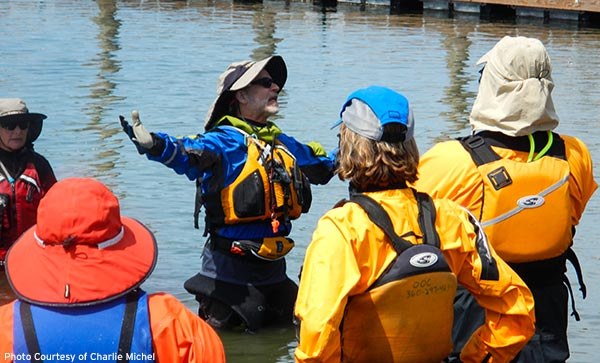
Last month I had the opportunity to participate in a rock climbing leadership course with about 20 other Mountaineers leaders and instructors. The first seminar focused on identifying our personal leadership style using the NOLS No-Doz model. which divides people into 4 leadership styles.
The course was taught by Chris Hagen from YMCA Bold and Gold, John Abel from NOLS, and Mick Pearson from Kaf Adventures guide company. While completing the exercise, I discovered my leadership style is a spontaneous motivator. My initial thought was “what the heck does that mean? Does that mean I’m just a cheerleader with no substance. Don’t I get stuff done? I should be a driver (the name of another leadership style)."
However, on further examination I discovered that in addition to motivating people to voice their ideas and starting energetic dialogue I can be both an interpersonal problem solver as well as task problem solver. Phew, that's good to hear! That said the model also mentions that I’m often emotionally bound to my ideas and I can create a highly emotionally charged climate if I put too much emphasis on challenging others. Not exactly what one likes to hear, but it resonated with some other feedback I have received in the past.
Although all of us fell into one quadrant or other, we spent some time talking about how a great leader can utilize different leadership styles depending on the situation and the importance of recognizing your default style and how you can learn and grow by working with different styles and trying to incorporate new behaviors into your own.
Task vs. Relationship Behavior
Most leadership styles tend to have a mix of task behavior and relationship behavior. Task behavior consists of instructing, setting goals, directing, telling, and managing. Relationship behavior is providing feedback, facilitating, defining boundaries, supporting, and educating*.
We learned that if you tend to do more directing and managing, you should consider trying a more hands-off approach focused on sparking conversation between other participants and instructors. If you tend to lead from behind, try being up front and explaining your route finding and challenging students to make more directed decisions. Participant ability, willingness, and time are all conditions* that can affect the leadership style you can take at different points in the trip. The final element is risk which tends to drive a more directed task approach. We tend to see this on our trips when weather comes in or conditions are not ideal.
I encourage everyone to think about their default leadership style and think about some scenarios where it might make sense to try a different style. What works best for instruction in town or on a trail versus on a snowy slope? We'd love to hear your thoughts in the comments below!
Resources to learn more:
- Leadership the Outward Bound Way
- *AMC Guide to Outdoor Leadership: Trip Planning, Group Dynamics, Decision Making, Leading Youth, Risk Management
- Outdoor Leadership
- NOLS No Doze
 Tess Wendel
Tess Wendel